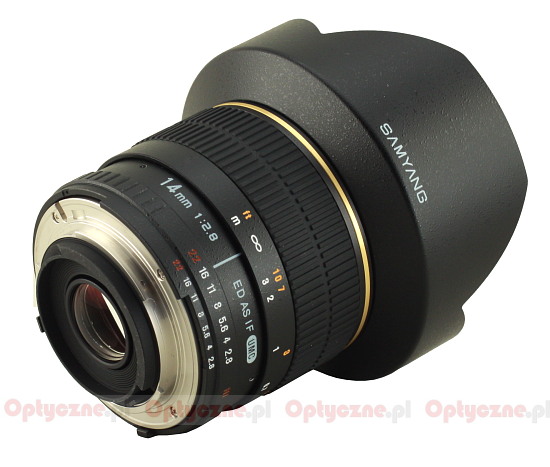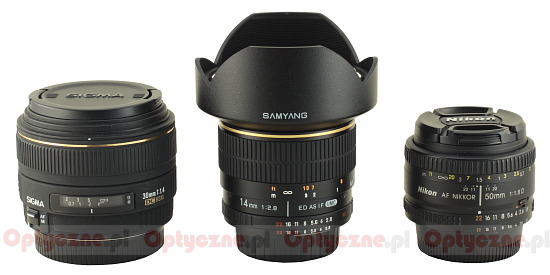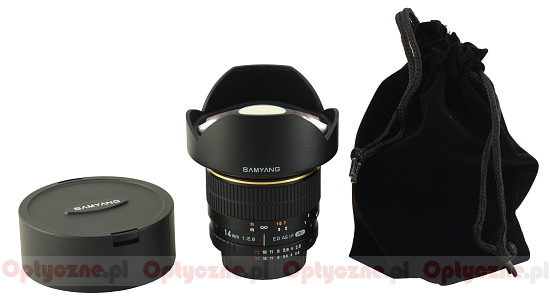Samyang 14 mm f/2.8 ED AS IF UMC
3. Build quality
 |
After the ring we find a small and immobile fragment of the metal casing with the inscription: "14 mm 1:2.8 ED AS IF UMC". Moving in the direction of the mount we see a narrow aperture ring. Contrary to an 8 mm model, this one has a nicely damped action. You can change the aperture in the range from f/2.8 to f/22 every 1/2 EV stop.
Please Support UsIf you enjoy our reviews and articles, and you want us to continue our work please, support our website by donating through PayPal. The funds are going to be used for paying our editorial team, renting servers, and equipping our testing studio; only that way we will be able to continue providing you interesting content for free. |
- - - - - - - - - - - - - - - - - - - - - - - - - - - - - - - - - - - - - - - - - - - - - - - -
At the very end we find a metal bayonet mount which surrounds an immobile rear element, about 17 mm in diameter. The producer didn’t anticipate any possibility of using filters there, as also in front we deal with a big convex element. It’s a pity Samyang didn’t follow the example of the manufacturer of the Zenitar 2.8/16 – they managed to include small screw-on filters for the rear element.
How does the Samyang 14 mm compares with its competitors? Our chart shows a comparison between its parameters and those of other lenses in this class. As you can notice, when it comes to weight and physical dimensions all these lenses constitute quite a homogeneous group. The Samyang differs from more expensive lenses only in the category of minimum focus, which in its case amounts to 0.28 meter and in the case of the Sigma and the Nikkor can descend to even 0.18-0.2 meter.
 |
The description above indicates that, compared to the first version of this lens, there are just few differences on the outside. There are more differences inside, though. The new model, as its predecessor, features 14 elements in 12 groups. However, the aspherical elements in the optic system of the lens have been redesigned. The first of them is an ordinary aspherical element, the second one is a hybrid aspherical element. Such a change is supposed to improve image resolution results by about 15% in the corners without influencing chromatic aberration. The second important change consists of redesigning the anti-reflection coatings (the UMC symbol on the casing) and damping down inner flares – it is supposed to make the lens less prone to flares and light artifacts.
 |
Inside the lens we’ll also find an aperture with six diaphragm blades which can be closed down to f/22.
The buyer gets both caps and a soft case included in box. In the case of the old model the big front cap for the huge front element was made of metal, now it is made of plastics, though.
 |






